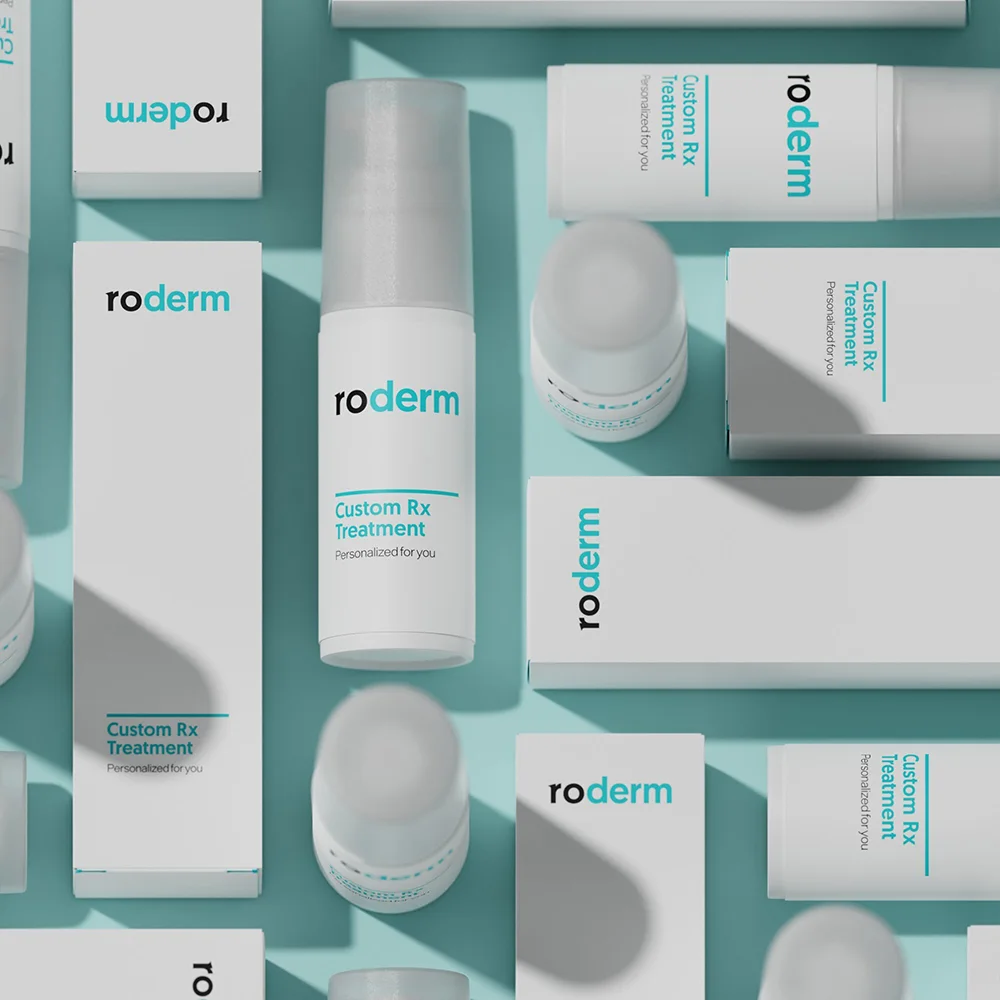Here's what we'll cover
Here's what we'll cover
Our skin does an excellent job at protecting our bodies from the environment, but sometimes it needs some help. For example, if your skin feels dry, it might be because it lacks a type of fatty acid called a ceramide.
Let’s take a look at what ceramides are and why they’re used in many skincare products.
What are ceramides?
Ceramides are lipids (fats) that are naturally found in your skin cells and make up a major part of your skin’s outer layer (epidermis) (Borodzicz, 2016). They enhance the integrity of your skin’s protective barrier and help keep your skin moisturized.
While our bodies naturally produce ceramides, they are also found in some foods like sweet potatoes, soy, wheat, and rice and are active ingredients in many skincare products (Tessema, 2017).
What do ceramides do for your skin?
To understand how ceramides help your skin, let’s take a step back and learn about what they’re made of.
Ceramides are made up of a structure that contains fatty acids and an amino acid called sphingosine. This structure strengthens the top layer of the epidermis (the stratum corneum) and protects your skin and the rest of your body from the outside environment.
As we grow older, our ceramide levels decrease, resulting in moisture loss, dry skin, and fine lines. This is why ceramides are added to some skincare products. Synthetic ceramides can provide your skin with some of the same benefits as natural ceramides, including (Wang, 2020):
Preventing moisture loss and dry skin
Protecting your skin from bacteria and germs
Creating a moisture barrier to keep skin hydrated
Improving skin cell function
Reducing signs of aging (fine lines, wrinkles, elasticity)
When shopping around for products with ceramides, you’ll see different types of ceramides listed. The most common types of ceramides found in skincare products include (Moore, 2017; Tessema, 2017):
Ceramide 1 (EOS)
Ceramide 2 (NS or NG)
Ceramide 3 (NP)
Ceramide 6-II (AP)
Ceramide 9 (EOP)
Each type has different uses and benefits. For example, products containing ceramides 1, 3, and 6-II may be useful if you have dry skin (Lueangarun, 2019).
Are topical ceramides safe to use?
In specific concentrations, ceramides are safe for cosmetic and skincare products (CIR, 2015).
For example, ceramide 3 is safe and effective in the following ceramide concentrations (Choi, 2015):
Body lotion on the back: 5%
Body lotion on the hands: 1%
Body lotion on face: 3%
Lipstick: 10%
Shampoo: 0.5%
While ceramides are considered safe, it is a good idea to do a patch test on your skin before committing to a new product. Discontinue use if you experience redness, itching, or skin irritation.
Choosing the right ceramide skincare products
Skincare products are ideally designed to mimic the skin’s natural moisturizing systems to enhance hydration and skin barrier function (Spada, 2018). So, choosing the right ceramide skincare product may help you achieve healthier skin.
But before you can set up a skincare routine that includes ceramides, it would help to know your skin type. The five skin types are (AAD, n.d.):
Normal skin (clear and not sensitive)
Oily skin (shiny and greasy)
Dry skin (flaky, itchy)
Sensitive skin (sting or burns after product use)
Combination skin (dry in some areas, oily in others)
Since ceramides are natural to our skin, they’re universally effective for all skin types, including sensitive skin. Still, knowing your skin type is important because it will help you narrow down what types of ceramide products will work best for your skin.
For example, if you have dry skin, a moisturizer that contains ceramides and hyaluronic acid may be helpful.
Here’s a look at several types of products that may contain ceramides:
Moisturizers, which are sealing agents with the goal of hydrating skin and preventing dryness
Lotions, which are thinner than moisturizers in texture with higher water content and less oil
Creams, which have a thicker consistency, create a stronger skin barrier to prevent water loss
Ointments, which have a thick texture with more oil and create a protective barrier
Serums, which are light oils easily absorbed into the skin to provide specific benefits
Facial cleansers, which remove dead skin cells, unclog pores, and prevent breakouts
Facial toners, which refresh the skin without removing natural oils
Sunscreens, which protect the skin from ultraviolet rays
Additionally, ceramide isn’t a stand-alone ingredient when it comes to skincare. It is commonly found alongside other exfoliating agents, antioxidants, and acids to address certain needs. Some ingredients you might see paired with ceramides include (Pandey, 2021):
Hyaluronic acid (increases skin hydration)
Retinols (vitamin A derivatives used in many anti-aging products)
Peptides (amino acids that promote collagen and elasticity to slow the aging process)
Niacinamide (a form of vitamin B3 that helps with anti-aging and reducing hyperpigmentation)
Glycerin (a moisturizing agent)
Using ceramides for your skin: the bottom line
Found in many skincare products, synthetic ceramides are designed to hydrate the skin, protect it from germs and toxins, and prevent signs of aging. They are generally safe to use and benefit all skin types.
Ultimately, understanding your skin type and consulting with a dermatologist are the best ways to choose the right skincare products. Looking for products that contain multiple hydrating ingredients can increase the effectiveness of your skincare routine and keep your skin clear and healthy.
DISCLAIMER
If you have any medical questions or concerns, please talk to your healthcare provider. The articles on Health Guide are underpinned by peer-reviewed research and information drawn from medical societies and governmental agencies. However, they are not a substitute for professional medical advice, diagnosis, or treatment.
American Academy of Dermatology Association (AAD). (n.d.). Skincare tips dermatologists use . Retrieved June 10, 2022 from https://www.aad.org/public/everyday-care/skin-care-basics/care/skin-care-tips-dermatologists-use
Borodzicz, S., Rudnicka, L., Mirowska-Guzel, D. et al. (2016). The role of epidermal sphingolipids in dermatologic diseases. Lipids in Health and Disease, 15 (13). doi:10.1186/s12944-016-0178-7. Retrieved from https://lipidworld.biomedcentral.com/articles/10.1186/s12944-016-0178-7
Choi, S. M. & Lee, B. (2015). Safety and risk assessment of ceramide 3 in cosmetic products. Food and Chemical Toxicology, 84 , 8-17. doi:10.1016/j.fct.2015.07.012. Retrieved from https://pubmed.ncbi.nlm.nih.gov/26206496/#:~:text=Based%20on%20previously%20reported%20exposure,are%20known%20to%20be%20safe
Cosmetic Ingredient Review (CIR). (2015). Safety assessment of ceramides as used in cosmetics. Retrieved from https://www.cir-safety.org/sites/default/files/cerami032015rep.pdf
Lueangarun, S., Tragulplaingam, P., Sugkraroek, S., et al. (2019). The 24-hr, 28-day, and 7-day post-moisturizing efficacy of ceramides 1, 3, 6-II containing moisturizing cream compared with hydrophilic cream on skin dryness and barrier disruption in senile xerosis treatment. Dermatologic Therapy, 32 (6), e13090. doi:10.1111/dth.13090. Retrieved from https://pubmed.ncbi.nlm.nih.gov/31585489/
Moore, D. J. & Rawlings, A. V. (2017). The chemistry, function and (patho) physiology of stratum corneum barrier ceramides. International Journal of Cosmetic Science, 39 (4), 366-372. doi:10.1111/ics.12399. Retrieved from https://onlinelibrary.wiley.com/doi/10.1111/ics.12399
Pandey, A., Jatana, G. K., & Sonthalia, S. (2021). Cosmeceuticals. StatPearls . Retrieved June 21, 2022 from https://www.ncbi.nlm.nih.gov/books/NBK544223/
Spada, F., Barnes, T., & Grieve, K. (2018). Skin hydration is significantly increased by a cream formulated to mimic the skin’s own natural moisturizing systems. Clinical, Cosmetic and Investigational Dermatology, 11 , 491-497. doi:10.2147/CCID.S177697. Retrieved from https://www.ncbi.nlm.nih.gov/pmc/articles/PMC6197824/
Tessema, E., Gebre-Mariam, T., Neubert, R., et al. (2017). Potential applications of phyto-derived ceramides in improving epidermal barrier function. Skin Pharamacology and Physiology, 30 , 115–130. doi:10.1159/000464337. Retrieved from https://www.karger.com/Article/Pdf/464337
Wang, Z., Man M., Li, T., et al. (2020). Aging-associated alterations in epidermal function and their clinical significance. Aging, 12 (6), 5551-5565. doi:10.18632/aging.102946. Retrieved from https://www.ncbi.nlm.nih.gov/pmc/articles/PMC7138575/










